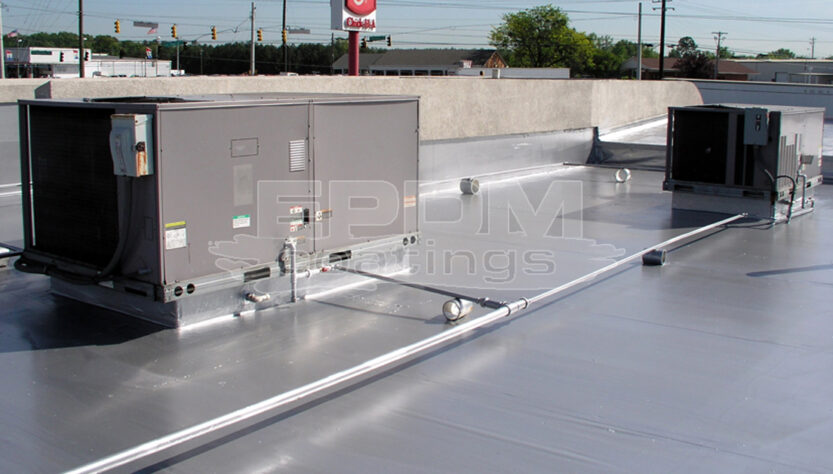EPDM has been used for many years for installing and repairing roofs on businesses, homes, and even RVs. However, despite that widespread usage, many people still have questions about what this product is, how it works, and more. In this post, we’ll address some of the most frequently asked questions we receive about EPDM roof Coatings.
Is EPDM roof Coatings made from EPDM?
Not usually. Our EPDM Roof Coatings is made from butyl liquid rubber. It has similar properties to EPDM but offers even greater flexibility, durability, and water resistance.
Is EPDM a liquid, or is it a membrane system?
Originally, EPDM roofing was only sold in sheets and rolls. Today that is not the case. EPDM coatings are available and can be applied with brushes and rollers to create membrane roof systems. Liquid EPDM applications offer better performance than sheets in key areas, including water resistance, weather resistance, solar reflectance, and even ease of installation.
What can be used as an EPDM roof Coatings?
While many products are marketed as usable with EPDM roofing, we recommend using butyl liquid rubber. Simply mix the liquid butyl rubber with a pre-measured catalyst and then apply a thin “flash” coat to the roof before applying the Coatings. While no primer coat is needed with other types of roofing, a light coat with EPDM roofing helps ensure better adhesion.
Can I use EPDM roof Coatings on my RV roof?
Yes, liquid butyl rubber can be used on any type of EPDM roofing, whether that’s the roof of a commercial building or your recreational vehicle. RV roofs have been made from EPDM for a long time, thanks to the material’s durability and water resistance. However, it can be punctured and will eventually need to be resealed. Liquid butyl rubber is an excellent choice for these situations.
Why does EPDM roofing need to be sealed?
Many EPDM roofs are installed in sheet form. These must be sealed around the edges to prevent air and water from penetrating under the material. A Coatings may also be necessary if the roofing material has been punctured and requires repairs. EPDM roof Coatings will also help extend the roof’s lifespan by protecting against UV-related damage after the roof has aged and begun to degrade.
What’s the best way to apply EPDM roof Coatings?
It depends on the reason the roof is being sealed. For standard edge sealing, we recommend running a bead of EPDM lap Coatings or butyl rubber caulk along the open edge. Liquid butyl rubber can be used for spot repairs and for sealing seams and seals. If the roof is attached using fasteners, use liquid butyl rubber to cover the back of the fastener.
Do I need to use EPDM roof Coatings around nails or bolts?
There’s some misinformation out there that EPDM is self-healing. It is not, at least not in the true sense of the word. EPDM will seal around a protrusion for a time but will eventually pull away enough to allow water into the space. We recommend using a high-quality EPDM roof Coatings around any such protrusions.
In Conclusion
The right EPDM roof Coatings is an essential consideration whether you’re repairing the roof of your business or extending the life of your RV’s roof. Butyl liquid rubber is an excellent choice for all these tasks and can be purchased in many formats, including caulk, small pails, large pails, and more. You’ll also find a range of colors to choose from, so matching your existing roof (or covering it with something more color-fast) is a simple matter.


